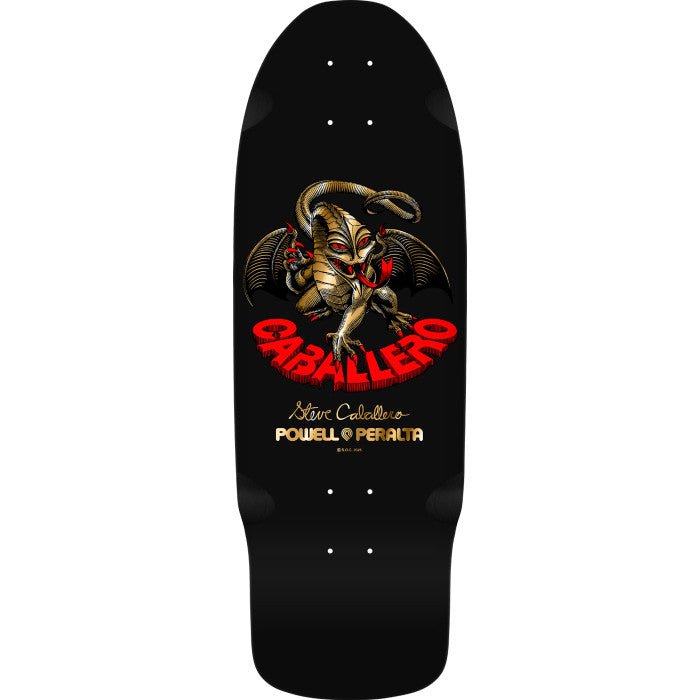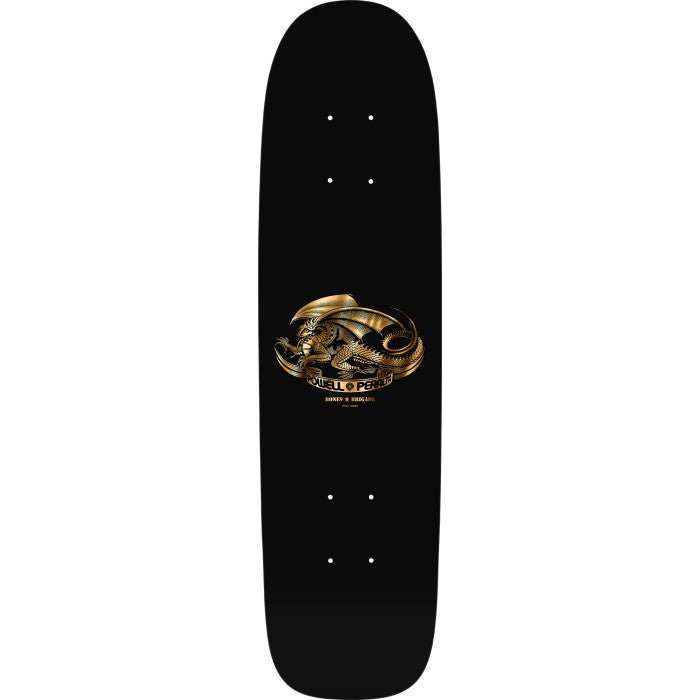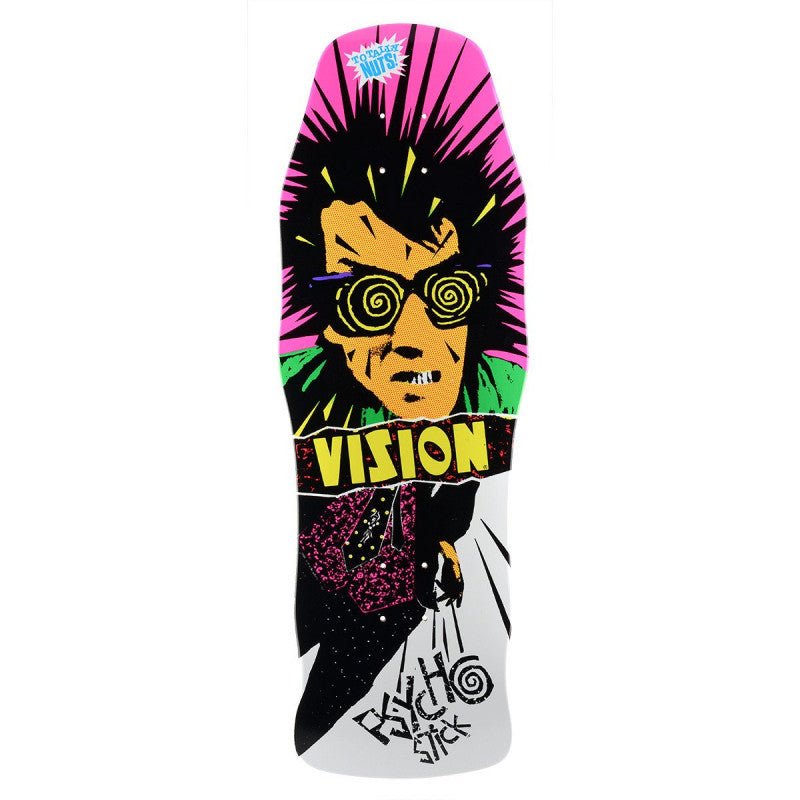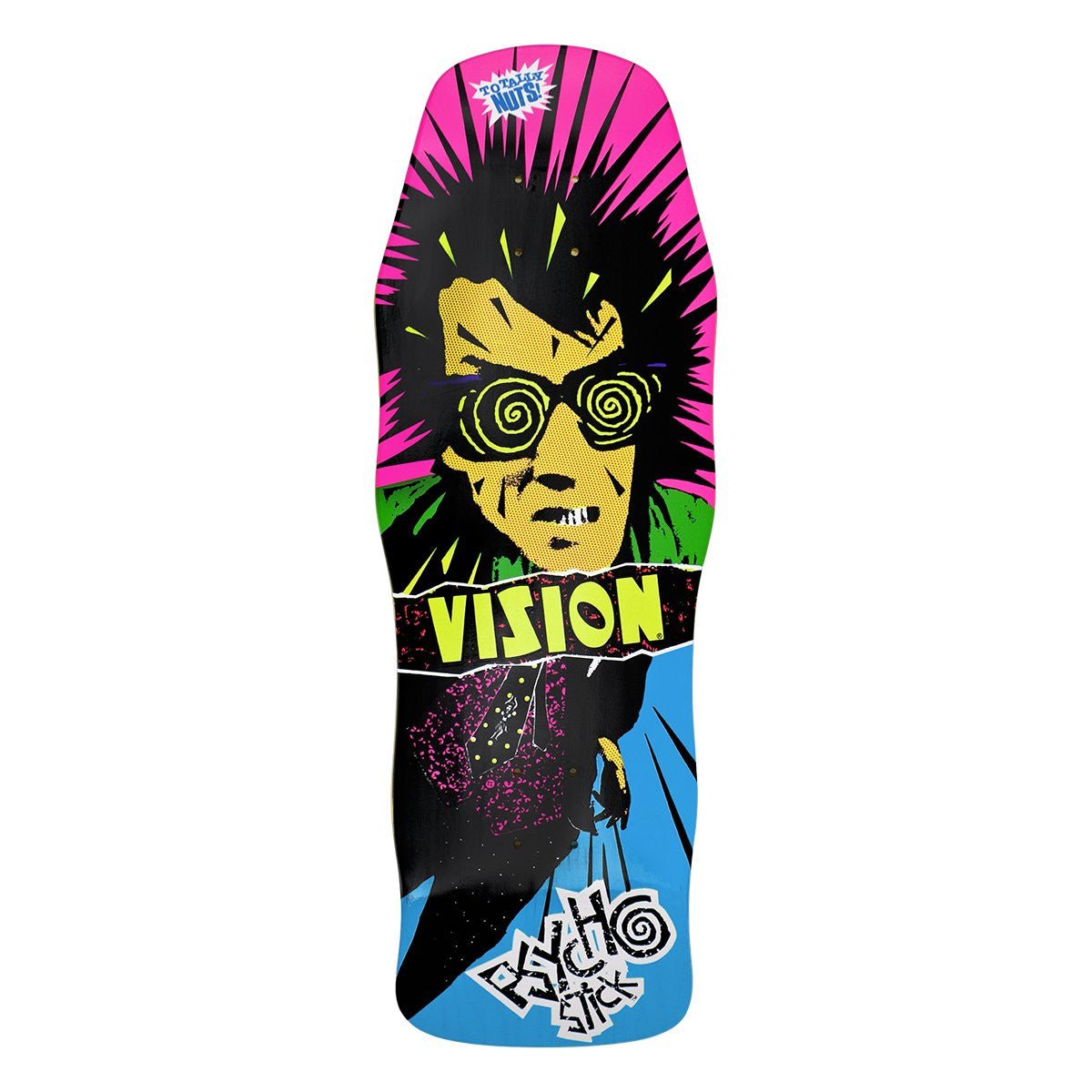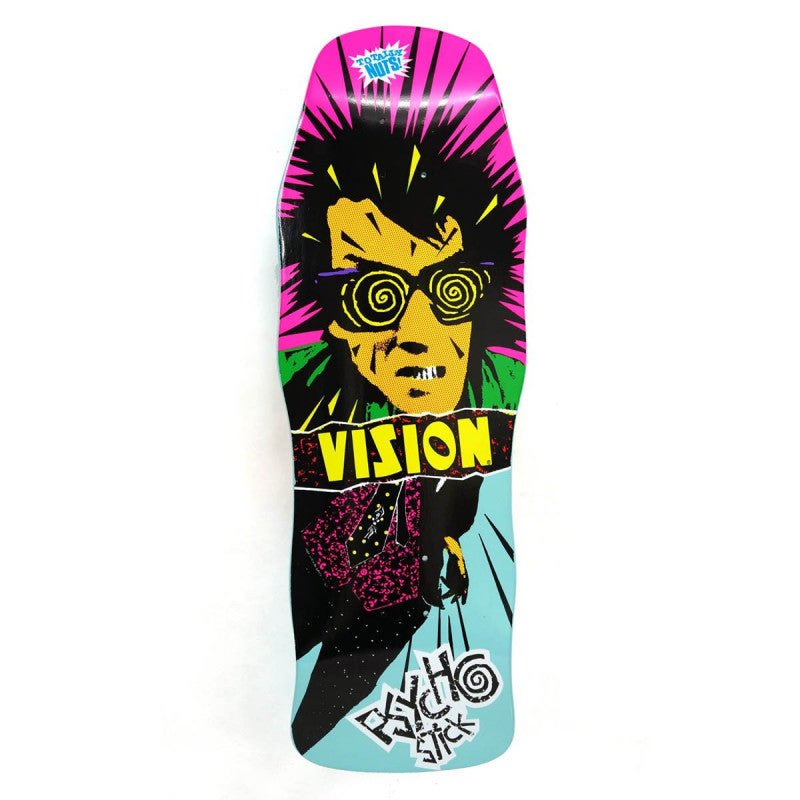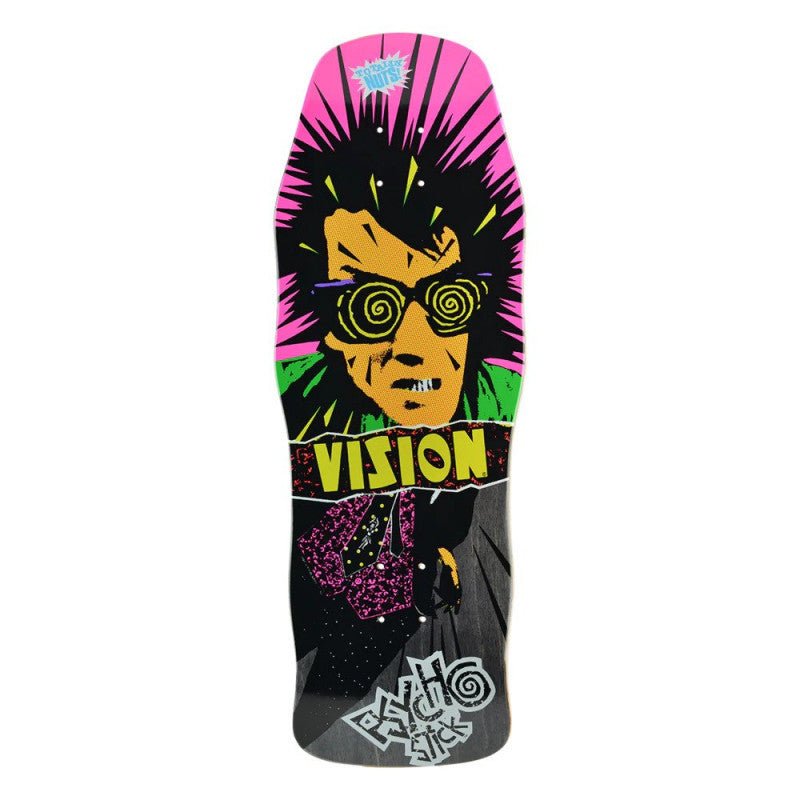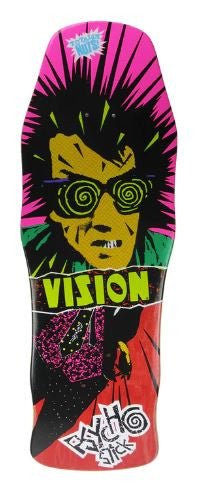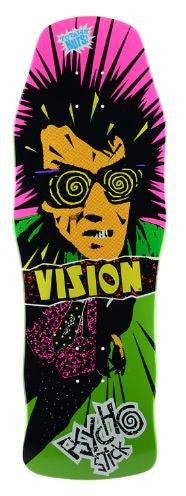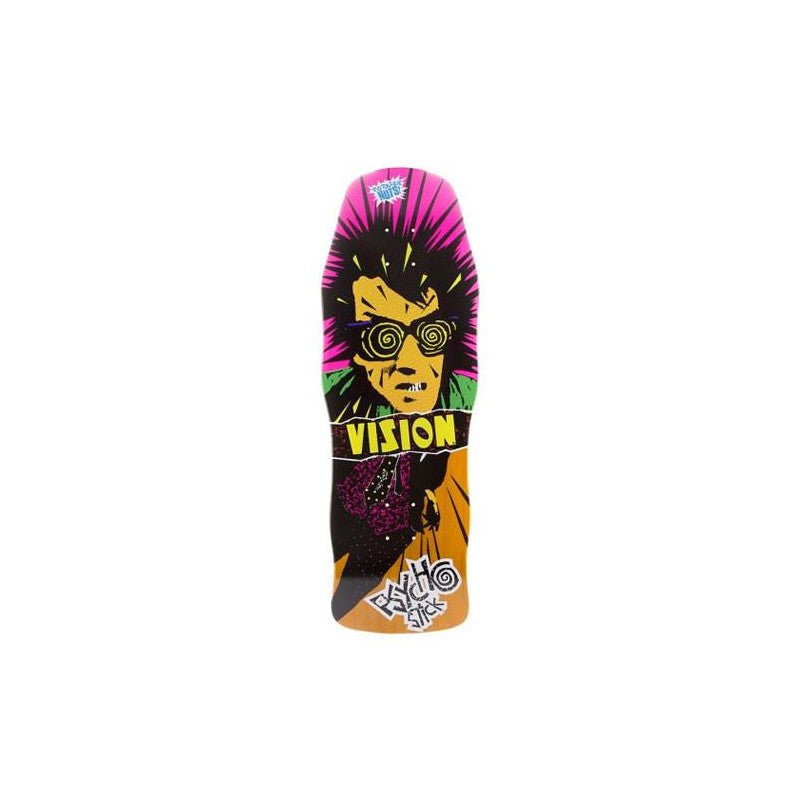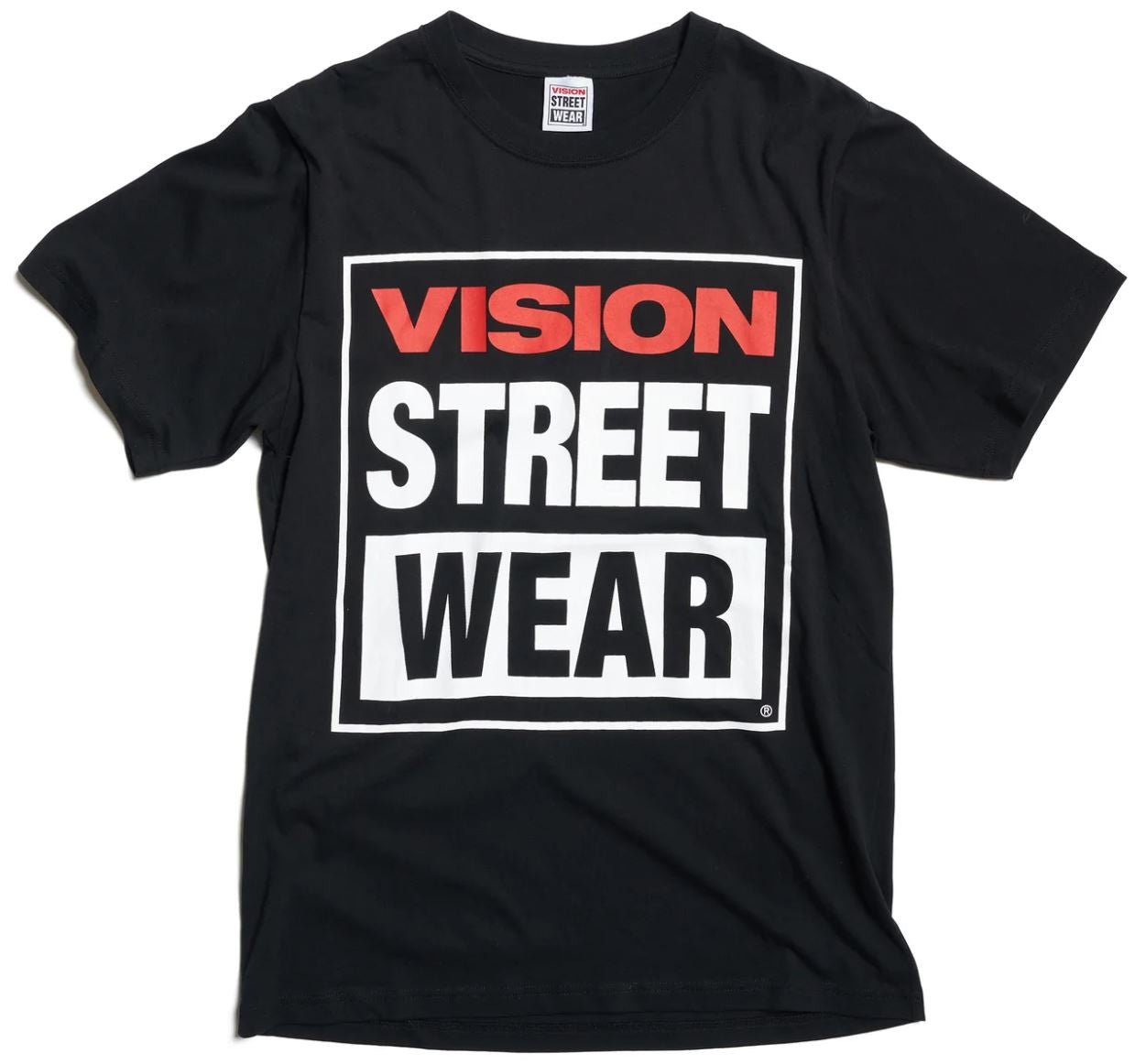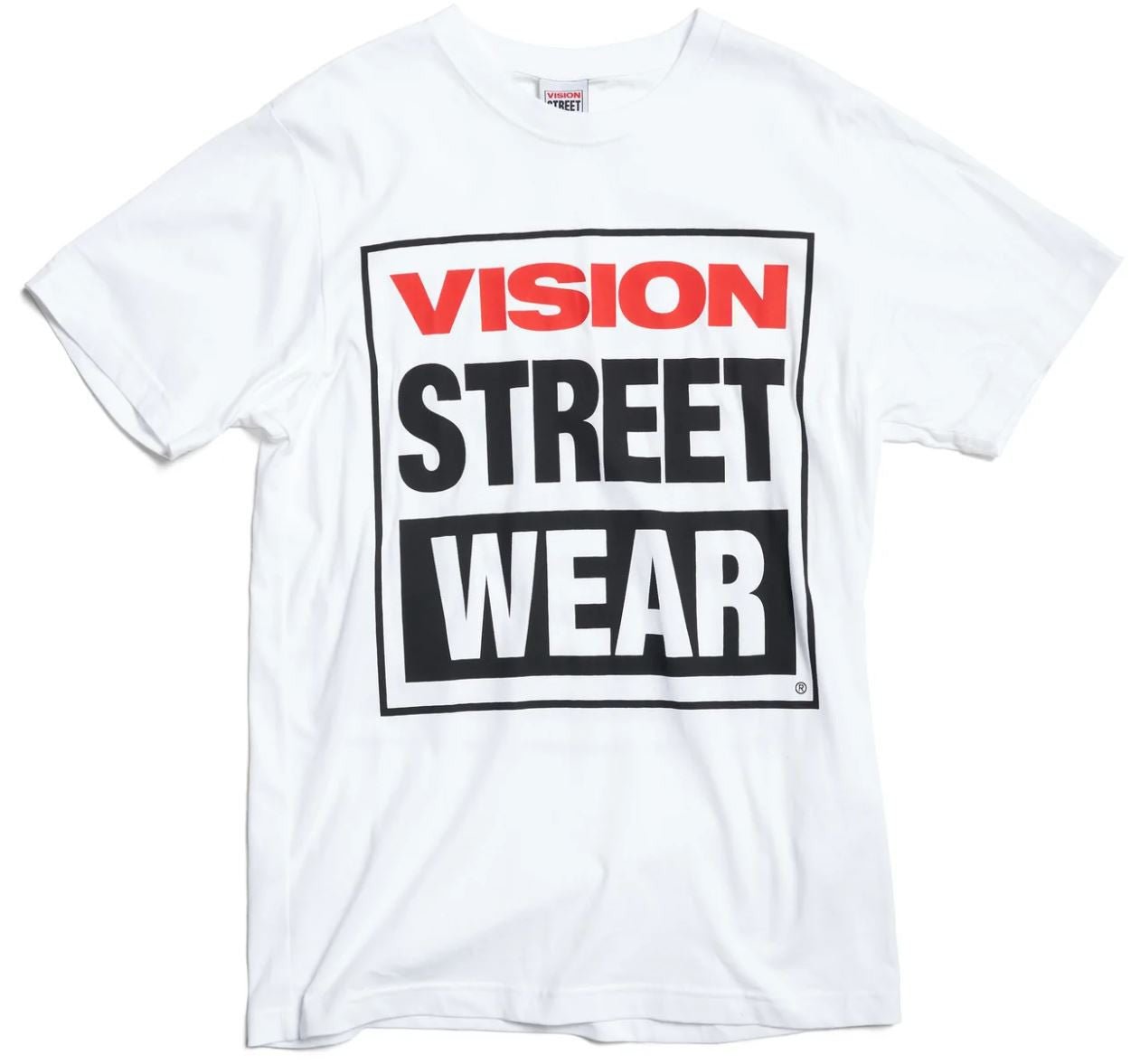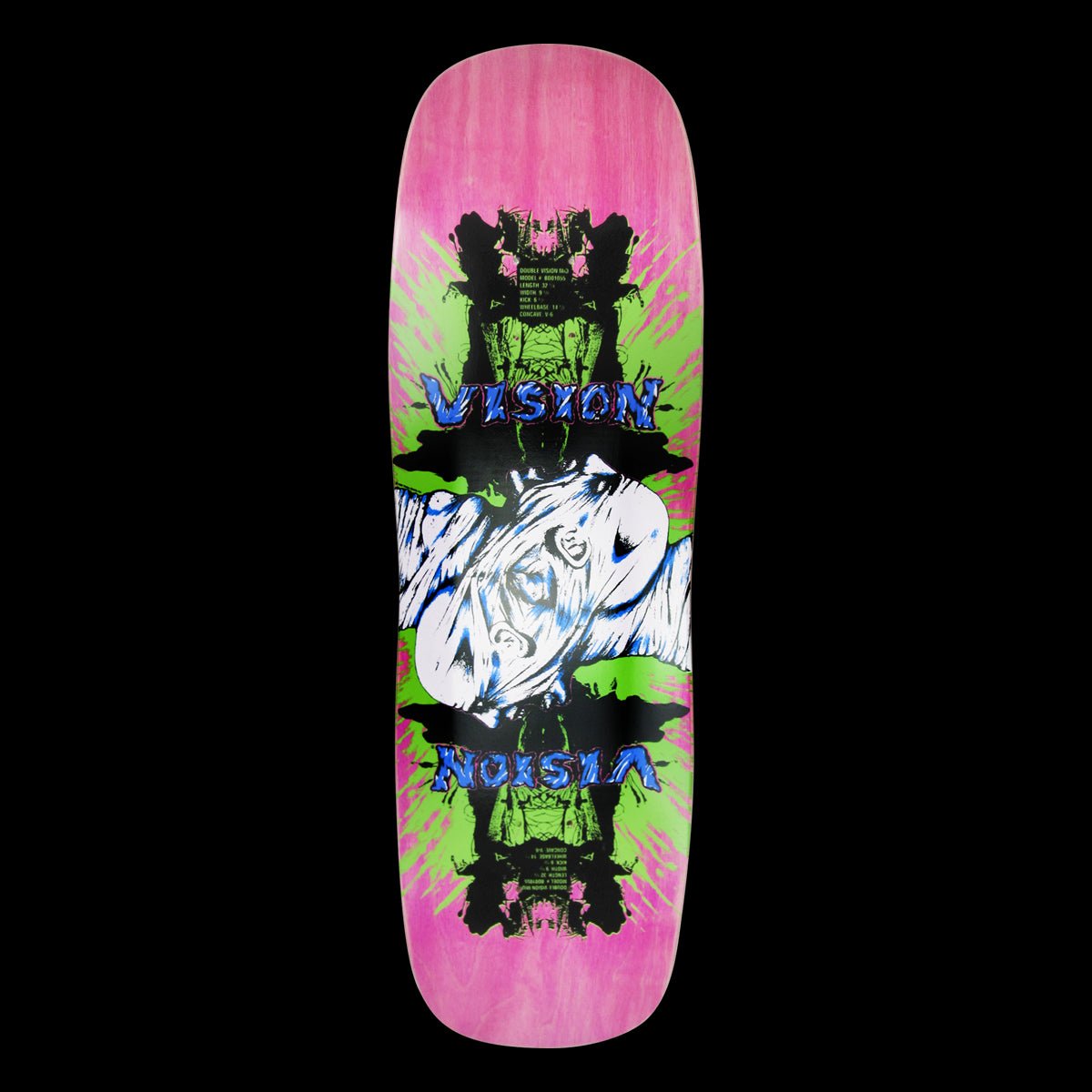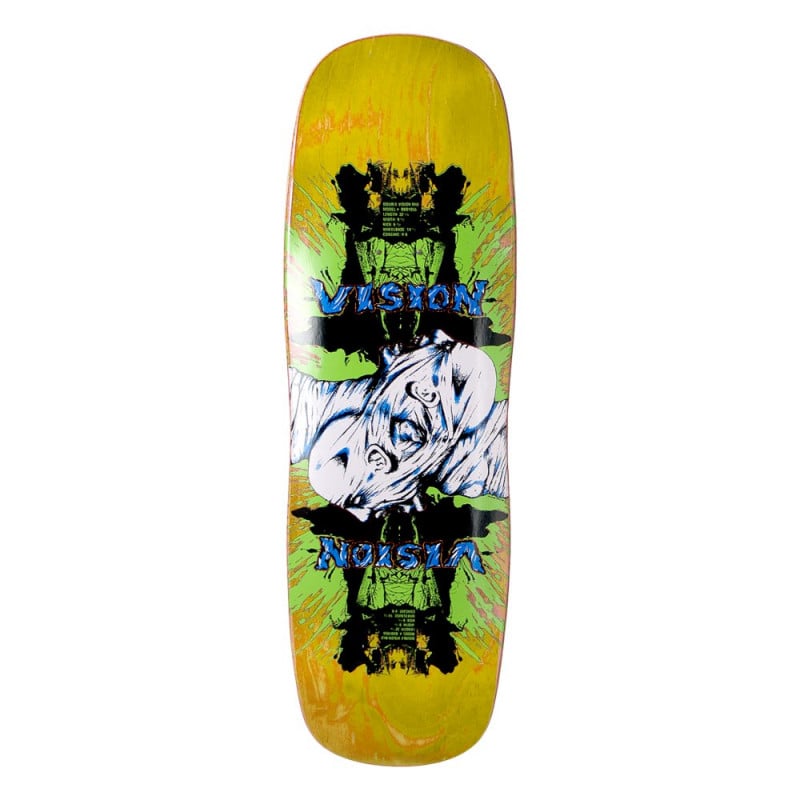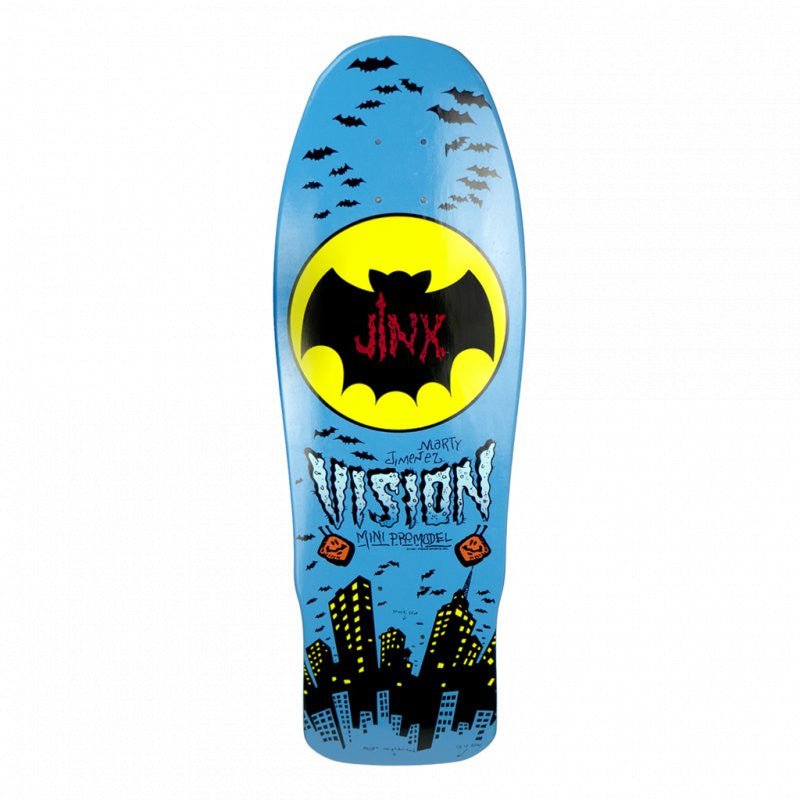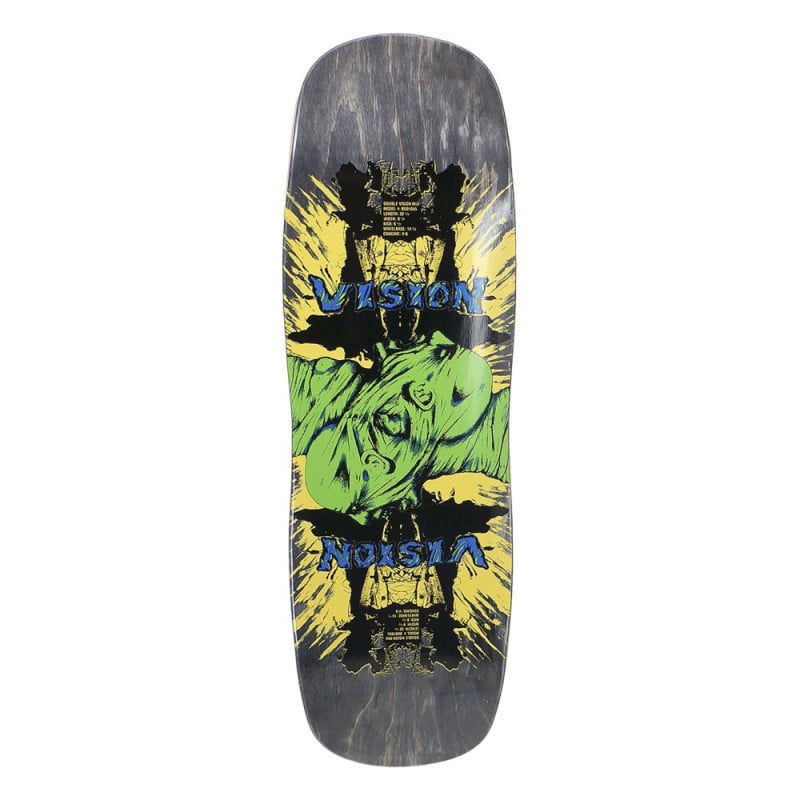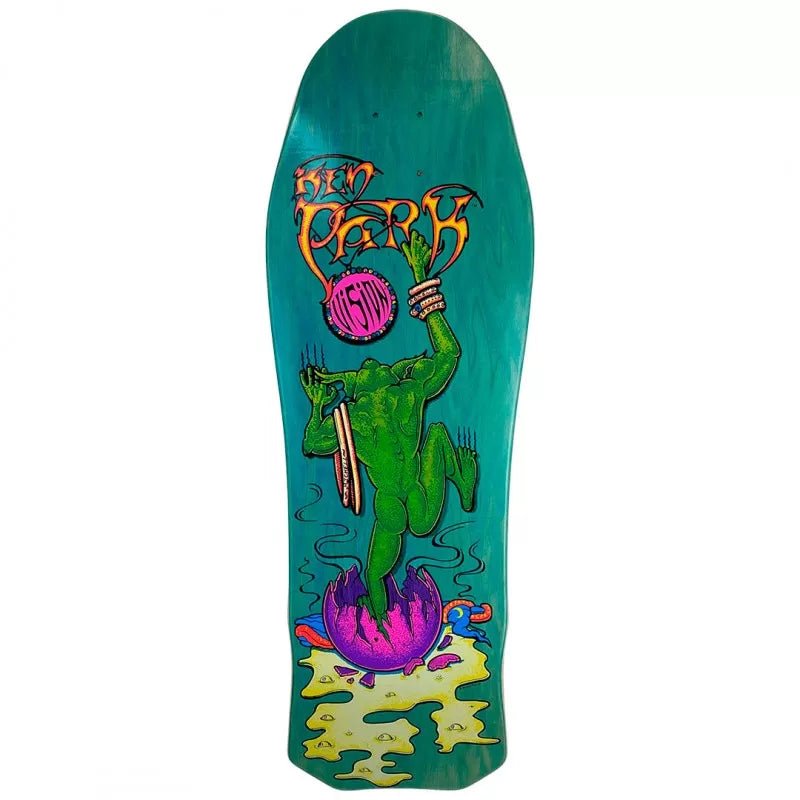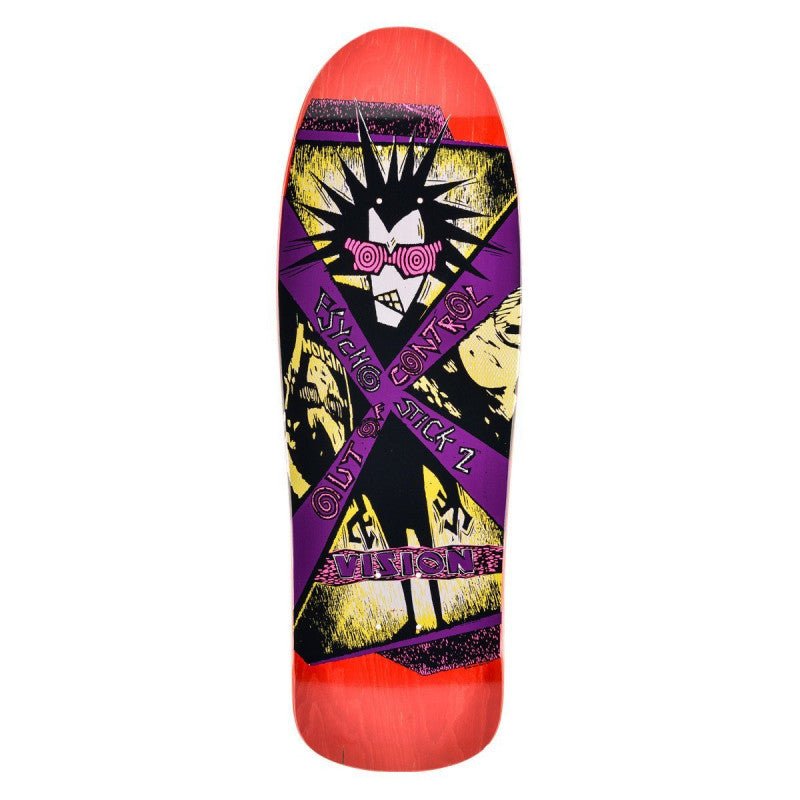Vision Skateboards and Vision Street Wear: A Full History
Vision Skateboards
Founding and Early Years
Vision Skateboards was founded in 1976 by Brad Dorfman in Southern California. Initially operating as a small skateboard brand, Vision quickly gained a reputation for its high-quality products and innovative designs. The company became one of the leading names in the skateboarding industry during the 1980s, a golden era for skateboarding.
Iconic Graphics and Pro Models
One of Vision’s major breakthroughs was the introduction of bold and colorful graphics on their skateboards. The "Psycho Stick," with its distinctive design by artist Andy Takakjian, became one of the most iconic skateboard graphics of the 1980s. Vision was also known for producing pro models for legendary skaters such as Mark "Gator" Rogowski, who played a crucial role in popularizing the brand. Gator’s pro model became one of the best-selling skateboards of the time.
Innovations and Influence
Vision Skateboards was at the forefront of innovation, not just in graphics but also in board shapes and technology. The company introduced various deck shapes to cater to different styles of skating, from street to vert. Vision's influence extended beyond the products themselves; the brand helped shape the culture and aesthetics of skateboarding during the 1980s.
Expansion and Popularity
In addition to skateboards, Vision expanded its product line to include wheels, trucks, and accessories. Their aggressive marketing strategies, including sponsoring top skaters and organizing high-profile skate events, further boosted their popularity. Vision Skateboards became synonymous with the rebellious and creative spirit of skateboarding during its heyday.
Decline and Resurgence
In the 1990s, Vision faced challenges as the skateboarding industry evolved. New brands emerged, and changes in skateboarding styles and preferences led to a decline in Vision’s dominance. However, in the 2000s, there was a resurgence of interest in retro and vintage skateboarding, leading to a revival of Vision Skateboards. The brand reissued classic decks and continued to attract both old-school skaters and new enthusiasts.
Vision Street Wear
Origins and Development
Vision Street Wear was launched in 1976 alongside Vision Skateboards by Brad Dorfman. Initially created to provide stylish and functional apparel for skateboarders, Vision Street Wear quickly became a cultural phenomenon. The brand’s clothing was designed to be durable and comfortable, catering to the needs of skaters while reflecting the edgy and rebellious spirit of skate culture.
Signature Styles and Products
Vision Street Wear became famous for its distinctive designs, including bold logos, vibrant colors, and innovative graphics. The brand's footwear, especially the iconic Vision Suede Hi-Tops, became a staple for skaters due to their durability and style. Vision Street Wear also offered a wide range of apparel, including t-shirts, hoodies, and pants, all designed with the active skateboarder in mind.
Cultural Impact and Popularity
During the 1980s, Vision Street Wear's popularity soared. The brand's clothing and shoes were not only worn by skaters but also embraced by the broader youth culture. Vision Street Wear played a significant role in shaping the fashion of the era, influencing the look and style of a generation. The brand’s presence at skate events and in skate magazines further solidified its status as a cultural icon.
Music and Media Influence
Vision Street Wear extended its influence beyond skateboarding into the music scene. The brand was closely associated with punk rock and alternative music, further embedding itself in the youth subculture. Vision Street Wear’s collaboration with musicians and appearance in music videos helped it reach a wider audience.
Challenges and Legacy
Like Vision Skateboards, Vision Street Wear faced challenges in the 1990s as the skateboarding and fashion industries evolved. Despite these challenges, the brand left an enduring legacy. In recent years, there has been a renewed interest in retro and vintage styles, leading to a revival of Vision Street Wear. The brand’s classic designs continue to be celebrated by both original fans and new generations.
Conclusion
Vision Skateboards and Vision Street Wear have left an indelible mark on skateboarding culture and fashion. From their pioneering graphics and innovative products to their influence on youth culture and music, both brands have played a significant role in shaping the skateboarding world. Despite facing challenges, their legacy endures, and they continue to inspire skaters and fashion enthusiasts alike.










![Powell - Peralta Bones Brigade Mike McGill Series 16 Old School Skateboard Deck [Pre - Order] - SkateTillDeath.com](http://www.skatetilldeath.com/cdn/shop/files/powell-peralta-bones-brigade-mike-mcgill-series-16-old-school-skateboard-deck-pre-order-powell-peralta-skatetilldeathcom-517421.jpg?v=1741934749&width=800)
![Powell - Peralta Bones Brigade Mike McGill Series 16 Old School Skateboard Deck [Pre - Order] - SkateTillDeath.com](http://www.skatetilldeath.com/cdn/shop/files/powell-peralta-bones-brigade-mike-mcgill-series-16-old-school-skateboard-deck-pre-order-powell-peralta-skatetilldeathcom-953763.jpg?v=1741934749&width=800)
![Powell - Peralta Bones Brigade Lance Mountain Series 16 Old School Skateboard Deck [Pre - Order] - SkateTillDeath.com](http://www.skatetilldeath.com/cdn/shop/files/powell-peralta-bones-brigade-lance-mountain-series-16-old-school-skateboard-deck-pre-order-powell-peralta-skatetilldeathcom-794573.jpg?v=1741934750&width=800)
![Powell - Peralta Bones Brigade Lance Mountain Series 16 Old School Skateboard Deck [Pre - Order] - SkateTillDeath.com](http://www.skatetilldeath.com/cdn/shop/files/powell-peralta-bones-brigade-lance-mountain-series-16-old-school-skateboard-deck-pre-order-powell-peralta-skatetilldeathcom-848239.jpg?v=1741934749&width=800)
![Powell - Peralta Bones Brigade Tommy Guerrero Series 16 Old School Skateboard Deck [Pre - Order] - SkateTillDeath.com](http://www.skatetilldeath.com/cdn/shop/files/powell-peralta-bones-brigade-tommy-guerrero-series-16-old-school-skateboard-deck-pre-order-powell-peralta-skatetilldeathcom-654910.jpg?v=1741934749&width=800)
![Powell - Peralta Bones Brigade Tommy Guerrero Series 16 Old School Skateboard Deck [Pre - Order] - SkateTillDeath.com](http://www.skatetilldeath.com/cdn/shop/files/powell-peralta-bones-brigade-tommy-guerrero-series-16-old-school-skateboard-deck-pre-order-powell-peralta-skatetilldeathcom-858524.jpg?v=1741934749&width=800)
![Powell - Peralta Bones Brigade Tony Hawk Series 16 Old School Skateboard Deck [Pre - Order] - SkateTillDeath.com](http://www.skatetilldeath.com/cdn/shop/files/powell-peralta-bones-brigade-tony-hawk-series-16-old-school-skateboard-deck-pre-order-powell-peralta-skatetilldeathcom-662992.jpg?v=1741934749&width=800)
![Powell - Peralta Bones Brigade Tony Hawk Series 16 Old School Skateboard Deck [Pre - Order] - SkateTillDeath.com](http://www.skatetilldeath.com/cdn/shop/files/powell-peralta-bones-brigade-tony-hawk-series-16-old-school-skateboard-deck-pre-order-powell-peralta-skatetilldeathcom-568924.jpg?v=1741934749&width=800)
